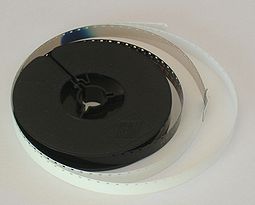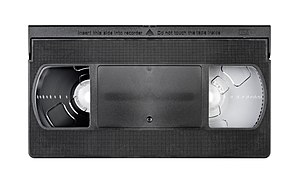This page is about 8 mm film as used in the 1960s+/-). For 8 mm video introduced to market in 1985, please see our section on Video8.
Contents
General About 8 mm Film
From wikipedia – 8 mm film:
“8 mm film is a motion picture film format in which the film strip is eight millimeters wide. It exists in two main versions – the original standard 8 mm film, also known as regular 8 mm, and Super 8. Although both standard 8 mm and Super 8 are 8 mm wide, Super 8 has a larger image area because of its smaller and more widely spaced perforations.”
- Standard 8
- released to market in 1932 (!),
- “to create a home movie format that was less expensive than 16 mm.”
- Common spools allowed about 3 to 4 1/2 minutes at 12, 15, 16, or 18 frames per second
- Kodak ceased sales of standard 8 mm under its own brand in the early 1990s (!)
- Super 8
- released to market in 1965,
- Super 8 is NOT compatible with Standard 8
- featured better quality image,
- easier to use due to a cartridge-loading system
- The Super 8 plastic cartridge is probably the fastest loading film system ever developed, as it can be loaded into the Super 8 camera in less than two seconds without the need to directly thread or touch the film
- each spool
- 50 feet / 15 m of film
- 72 frames per foot, tot around 3600 frames per film cartridge
- around 2.5 min at 24 fps
- around 3 min 20 sec at 18 fps
- In 1973, possibility for sound (magnetic strip) (none of our, La Familia, media)
La Familia and 8 mm
- Some Standard 8
- Some Super 8
- This as I do remember we had projector spools with both smaller spindle holes (Standard 8) and larger holes (Super 8)
- Materials has been through a few transitions….
 Originals, 1960s-1970s: Recordings originally made from the early 1960s and into earlier 1970s by C-J, First Standard 8 on earlier part of 1960s and then Super 8 (sometime after 1965 when that technology was introduced
Originals, 1960s-1970s: Recordings originally made from the early 1960s and into earlier 1970s by C-J, First Standard 8 on earlier part of 1960s and then Super 8 (sometime after 1965 when that technology was introduced VHS, 198x: J sent all the film spools he could find sometime in the 1980s to an external company that transfers film materials to VHS cassettes, PAL, one full plus a little bit more on a second cassette.
VHS, 198x: J sent all the film spools he could find sometime in the 1980s to an external company that transfers film materials to VHS cassettes, PAL, one full plus a little bit more on a second cassette.
- Sound – music – was added by that company.
- Digital, 2006: In Jan-Feb 2006, J digitalized all from VHS
- own setup including VHS player, a MS Windows Media PC
- Resulting in MPEG-2 files, 768×480 bitrate around 8.2 Mbps
- DVD, 2006: In Feb 2006, J, all materials digitized onto one single DVD:
- DVD-Video
- PAL video standard
- Total Size: 4.61 GB Used (98.1%, of 4.7 GB DVD)
- Quality: LP (Long Play)
- Playing time: around 2 hr 48 min
- Production details in DVD# 602051 – Gamla 8mm v1.0 (LP,PAL) (Swedish-only)
Equipment, Tools
Not sure where old film and equipment (projectors, cameras) are any longer but could be around somewhere in Sweden-Finland, but to play around yourself on your smartphone…:
Examples
“Real” 1960s
From C-Js old 8 mm films (and this is early 196os, thus Standard 8), med grandma, Liden, mom and dad.
“False” 1960s
J’s iPhone 4S, with the 8mm app, “60s” film, Classic lens, projector overlay sound (2013).
2013-03-05 Serious Planning
“Noir” film
And some say I have too much time for non-sense…
2013-03-05-11.57.34edited

